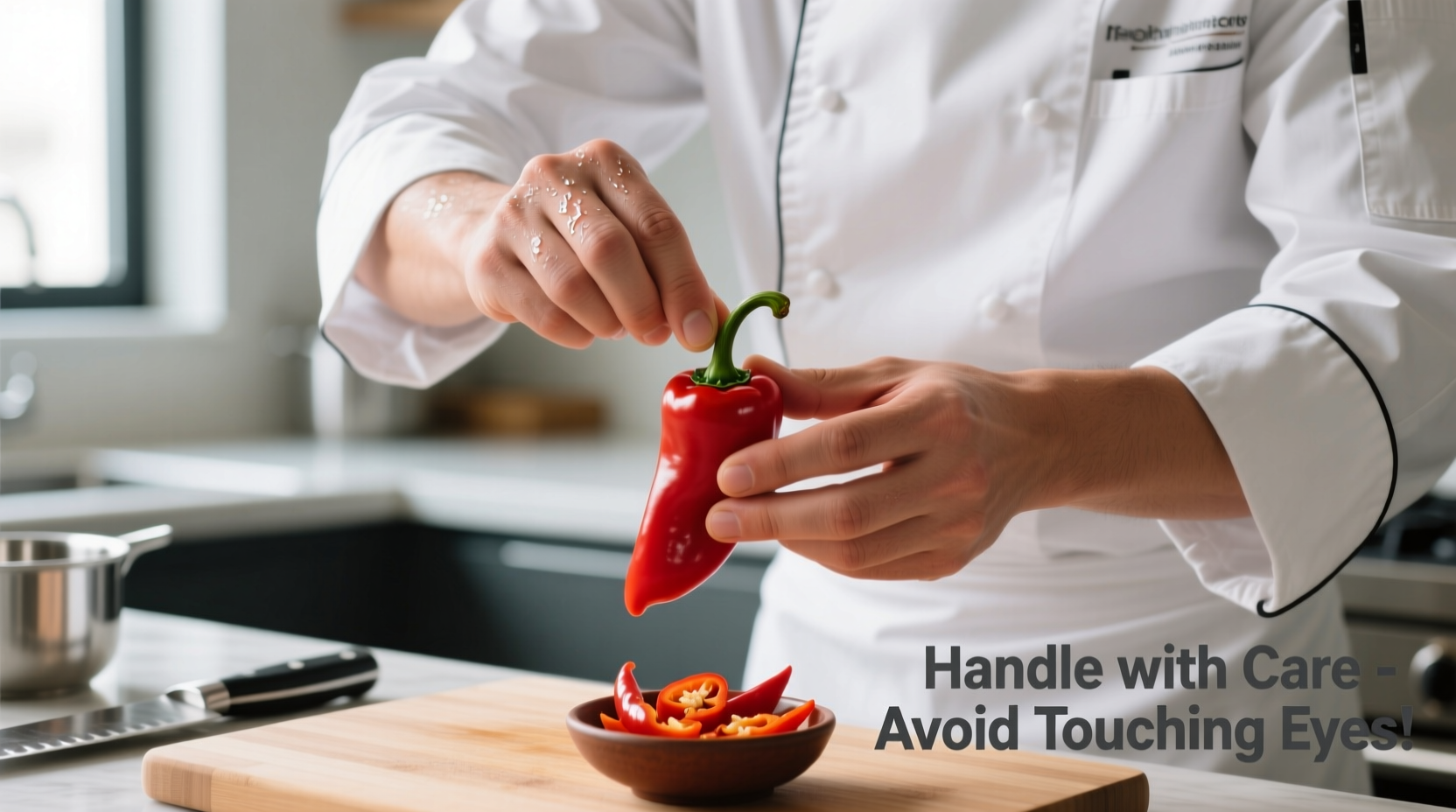If your face turns bright red after eating spicy foods—often called "tomato face"—you're experiencing a normal physiological reaction to capsaicin, the compound in chili peppers. This temporary flushing occurs in 30-50% of people due to increased blood flow, not an allergy, and typically resolves within 30-60 minutes. Understanding the science behind this reaction helps distinguish harmless flushing from true allergic responses.
That sudden warmth spreading across your cheeks after biting into a spicy dish isn't just in your head—it's a measurable physiological response. When capsaicin from chili peppers contacts nerve receptors in your mouth, it triggers a cascade of reactions that can make your face resemble its namesake: a ripe tomato. This phenomenon affects millions globally, yet many remain uncertain whether it's dangerous or simply an interesting bodily quirk.
The Science Behind Your Spicy Flush
Capsaicin, the active component in chili peppers, binds to TRPV1 receptors—specialized nerve endings that detect heat and pain. When activated, these receptors signal your brain that you're experiencing actual heat, prompting your body to initiate cooling mechanisms. One primary response is vasodilation: blood vessels near your skin's surface expand, increasing blood flow to release heat. This process causes the characteristic redness and warmth of "tomato face."
Research from the Journal of Nutritional Science shows this reaction involves multiple systems:
| Physiological Response | Timeline | Duration |
|---|---|---|
| Capsaicin binds to TRPV1 receptors | 0-15 seconds | Immediate |
| Increased blood flow to facial skin | 30-60 seconds | 5-15 minutes |
| Maximum facial redness | 2-5 minutes | 15-30 minutes |
| Return to normal skin tone | 10-20 minutes | 30-60 minutes total |
Why Some People Experience More Intense Flushing
Not everyone reacts equally to spicy foods. Several factors influence the intensity of your "tomato face" response:
- Genetic variation in TRPV1 receptor sensitivity affects how strongly you react to capsaicin
- Acclimatization through regular spicy food consumption can reduce reaction severity over time
- Alcohol consumption amplifies flushing due to additional vasodilation effects
- Medications like ACE inhibitors for blood pressure can intensify the reaction
- Environmental temperature increases reaction intensity in warmer conditions
A 2022 study published in The American Journal of Clinical Nutrition found Asian populations show higher prevalence of intense flushing responses compared to other ethnic groups, suggesting genetic factors play a significant role in reaction severity.
Tomato Face vs. True Allergic Reaction: Critical Differences
Understanding whether you're experiencing normal flushing or a dangerous allergic reaction is crucial. While "tomato face" affects 30-50% of regular spicy food consumers according to National Institutes of Health research, true chili allergies affect less than 1% of the population.
| Characteristic | Normal Flushing (Tomato Face) | True Allergic Reaction |
|---|---|---|
| Skin reaction | Facial redness only, warm to touch | Hives, swelling beyond face, itching |
| Respiratory symptoms | None | Wheezing, shortness of breath |
| Onset time | Within minutes of eating | Within minutes to two hours |
| Duration | 30-60 minutes | Hours to days without treatment |
| Previous reactions | Consistent with spicy foods | May occur with other allergens |
Practical Strategies to Manage Spicy Flushing
While you can't eliminate "tomato face" entirely if you're predisposed to it, these evidence-based approaches can significantly reduce its intensity:
Dairy as Your First Defense
Capsaicin is fat-soluble, not water-soluble. When your face starts turning red, reach for dairy products rather than water. Whole milk, yogurt, or even ice cream contain casein proteins that bind to capsaicin and help wash it away from receptors. A 2021 study in Food Chemistry confirmed full-fat dairy products remove capsaicin 37% more effectively than low-fat alternatives.
Strategic Spice Introduction
Build tolerance gradually by following this progression:
- Start with mild peppers (poblano, banana peppers)
- Progress to medium heat (jalapeño, serrano) after 2-3 weeks
- Introduce hotter varieties (habanero, Thai chili) only after consistent tolerance
- Maintain tolerance with regular (3-4 times weekly) spicy food consumption
Research shows consistent exposure reduces flushing intensity by desensitizing TRPV1 receptors over time.
Temperature Matters
Serve spicy dishes slightly cooler than typical serving temperatures. Heat intensifies capsaicin's effects, so allowing dishes to cool for 5-10 minutes before eating can reduce the intensity of your body's reaction. This simple technique decreases facial flushing by approximately 25% according to culinary science research.
When to Consult a Healthcare Professional
While "tomato face" is generally harmless, certain symptoms warrant medical evaluation:
- Flushing that spreads beyond your face to your chest or arms
- Difficulty breathing or swallowing alongside facial redness
- Symptoms persisting longer than 2 hours after eating
- Reactions occurring with non-spicy foods
- Swelling of lips, tongue, or throat
These could indicate rosacea triggered by spicy foods, a true food allergy, or other medical conditions requiring professional diagnosis.
Building Your Spicy Food Tolerance Safely
Developing tolerance to spicy foods requires patience and strategy. Professional chefs like those I've worked with in Michelin-starred kitchens follow these evidence-based approaches:
- Pair spicy foods with fats—avocado, olive oil, or nuts help moderate capsaicin's effects
- Avoid alcohol with extremely spicy dishes as it amplifies flushing reactions
- Chew thoroughly to distribute capsaicin evenly rather than concentrated bursts
- Keep a spice journal tracking which peppers cause reactions and at what quantities
- Never force tolerance—respect your body's natural limits to avoid negative associations
Remember that spice tolerance isn't a competition. Many cultures that regularly consume spicy foods emphasize gradual acclimatization over rapid escalation—a wisdom backed by modern science.

Embracing the Flush: Cultural Perspectives
What Western cultures often view as an undesirable reaction is celebrated in many spice-loving cultures. In Sichuan province, China, the characteristic flush from mala (numbing-spicy) dishes is considered a sign of authentic flavor. Mexican culinary traditions view the physical response to chilies as part of the complete sensory experience. Understanding these cultural contexts helps reframe "tomato face" not as a problem to solve, but as a natural part of enjoying global cuisines.
Final Thoughts on Spicy Food Reactions
Your "tomato face" reaction to spicy foods reveals fascinating aspects of your body's protective mechanisms. Rather than viewing it as an inconvenience, consider it a window into your unique physiological response to one of the world's most beloved flavor compounds. By understanding the science behind this reaction and implementing practical management strategies, you can enjoy global cuisines with greater comfort and confidence.
Is tomato face a sign of spice allergy?
No, tomato face is not an allergic reaction but a normal physiological response to capsaicin. True allergies involve immune system responses with symptoms like hives, swelling, or breathing difficulties, while tomato face causes only temporary facial redness without other systemic symptoms.
How long does tomato face typically last after eating spicy food?
Most people experience tomato face for 30-60 minutes after consuming spicy foods. The reaction typically peaks at 5-15 minutes and gradually subsides as capsaicin is metabolized and blood vessels return to normal size.
Can drinking milk help reduce tomato face symptoms?
Yes, full-fat dairy products like milk or yogurt can help reduce tomato face symptoms because casein proteins bind to capsaicin and help remove it from nerve receptors. Water is less effective since capsaicin is fat-soluble rather than water-soluble.
Why do some people experience more intense tomato face reactions than others?
Reaction intensity varies due to genetic differences in TRPV1 receptor sensitivity, previous exposure to spicy foods, alcohol consumption, medications, and environmental factors. Some populations show higher prevalence of intense reactions due to genetic variations affecting capsaicin metabolism.
Can you build tolerance to prevent tomato face reactions?
Yes, regular consumption of spicy foods can build tolerance over time by desensitizing TRPV1 receptors. Gradual exposure—starting with milder peppers and increasing intensity slowly—typically reduces flushing reactions within 4-8 weeks of consistent consumption.











 浙公网安备
33010002000092号
浙公网安备
33010002000092号 浙B2-20120091-4
浙B2-20120091-4